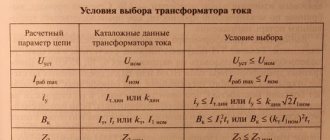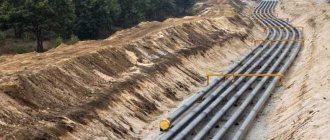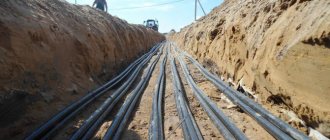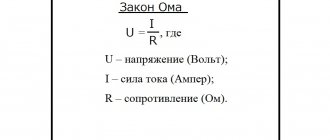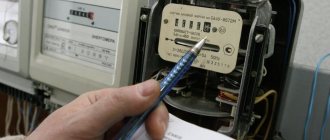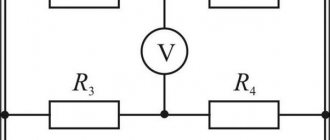To understand what electricity losses are in electrical networks, you will need to understand the power supply system itself. It consists of a number of structural elements, each of which, under certain conditions, contributes to overhead costs. In addition, they may be associated with the need to meet their own needs for auxiliary equipment of substations. From this it follows that it is almost impossible to do without losses in electrical circuits.
Types and structure of losses
Losses mean the difference between the electricity supplied to consumers and the energy actually received by them. To normalize losses and calculate their actual value, the following classification was adopted:
- Technological factor. It directly depends on characteristic physical processes, and can change under the influence of the load component, semi-fixed costs, as well as climatic conditions.
- Costs spent on operating auxiliary equipment and providing the necessary conditions for the work of technical personnel.
- Commercial component. This category includes errors in metering devices, as well as other factors causing under-metering of electricity.
Below is an average graph of losses for a typical electric company.
Approximate loss structure
As can be seen from the graph, the highest costs are associated with transmission via overhead lines (power lines), this accounts for about 64% of the total losses. In second place is the corona effect (ionization of air near the overhead line wires and, as a consequence, the occurrence of discharge currents between them) – 17%.
Corona discharge on a power line insulator
Based on the presented graph, it can be stated that the largest percentage of non-targeted expenses falls on the technological factor.
Distribution schemes for the first category of receivers
As for the distribution of energy to power receivers of the first category, in this case it is necessary to connect from two independent power centers simultaneously. In addition, in such schemes, not one distribution point is often used, but two, and a system for automatically turning on backup power is always provided.
For electrical receivers that belong to the first category, automatic switching to backup power is installed on input distribution devices. With this connection system, the distribution of electric current is carried out using two power lines, each of which is characterized by a voltage of up to 1 kV, and is also connected to independent transformers.
Main causes of electricity losses
Having understood the structure, let's move on to the reasons that cause inappropriate expenditure in each of the categories listed above. Let's start with the components of the technological factor:
- Load losses occur in power lines, equipment and various elements of electrical networks. Such costs directly depend on the total load. This component includes:
- Losses in power lines are directly related to current strength. That is why, when transmitting electricity over long distances, the principle of increasing it several times is used, which contributes to a proportional reduction in current and, accordingly, costs.
- Consumption in transformers of magnetic and electrical nature ( ). As an example, below is a table that shows cost data for substation voltage transformers in 10 kV networks.
Losses in power transformers of substations
Non-target consumption in other elements is not included in this category, due to the complexity of such calculations and the insignificant amount of costs. For this, the following component is provided.
- Category of semi-fixed expenses. It includes costs associated with the normal operation of electrical equipment, these include:
- Idle operation of power plants.
- Costs in equipment providing reactive load compensation.
- Other types of costs in various devices, the characteristics of which do not depend on the load. Examples include power insulation, metering devices in 0.38 kV networks, measuring current transformers, surge limiters, etc.
- Climatic component. Inappropriate consumption of electricity may be associated with climatic conditions characteristic of the area where power lines pass. In networks of 6 kV and higher, the magnitude of the leakage current in the insulators depends on this. In main lines from 110 kV, a large share of the costs falls on corona discharges, the occurrence of which is facilitated by air humidity. In addition, during the cold season, our climate is characterized by the phenomenon of icing on the wires of high-voltage lines, as well as conventional power lines.
Ice on power lines
Taking into account the last factor, the energy costs for melting ice should be taken into account.
How to deal with power losses in overhead lines
Overhead power lines are the easiest to operate and maintain, but their use often leads to a decrease in the quality of electricity supplied to the user. This can manifest itself in sudden voltage surges, long periods of low or high voltage, etc.
There are many reasons for electricity losses in overhead lines. The most common of them are the following:
- resistance losses in overhead lines;
- reactive load, which causes incomplete absorption of electricity, reflection from the load and circulation of parasitic currents in the wires;
- theft of electricity.
How to deal with electricity losses? There are a number of ways to do this, some of which we will consider further.
The first way to combat energy loss is to reduce the resistance of the neutral wire. To do this, the wire is re-grounded at each pole or at each load. This method (of course, only when performed correctly) can reduce energy losses by approximately 50%.
The second effective way to reduce electricity losses is similar to the first.
When operating overhead power lines, wire breaks often occur, twists and splices are formed, on which local increased resistance is noted.
Finding the location of cable damage and eliminating it can significantly increase the voltage in the network. Sometimes, to reduce energy losses, it is necessary to replace the entire overhead line.
Another option for reducing energy losses is to install voltage stabilizers at the entrance to the building.
If the cause of voltage drops or surges in the overhead network is reactive power, it is necessary to use devices to compensate for it.
Switching to a three-phase connection will also help reduce energy losses, which will reduce the currents in each phase and allow you to evenly distribute the load on the line.
What to do if electricity losses are caused by electricity theft? In this case, it will help to remove the electric meter from the building and install it in a special sealed box on an overhead power line pole.
Before taking measures to reduce energy losses, you need to find out their cause. An energy audit, which can be ordered in our electrical laboratory, will help with this.
Costs for supporting the operation of substations
This category includes the cost of electrical energy for the operation of auxiliary devices. Such equipment is necessary for the normal operation of the main units responsible for the conversion of electricity and its distribution. Costs are recorded using metering devices. Here is a list of the main consumers belonging to this category:
- ventilation and cooling systems for transformer equipment;
- heating and ventilation of the technological room, as well as internal lighting fixtures;
- lighting of areas adjacent to substations;
- battery charging equipment;
- operational circuits and monitoring and control systems;
- outdoor equipment heating systems, such as air circuit breaker control modules;
- various types of compressor equipment;
- auxiliary mechanisms;
- equipment for repair work, communication equipment, as well as other devices.
General description of the process
As mentioned earlier, the initial object from which the distribution of electricity begins is today a power station. Nowadays, there are three main types of stations that can supply consumers with electricity. This can be a thermal power plant (TPP), a hydroelectric power station (HPP) and a nuclear power station (NPP). In addition to these main types, there are also solar or wind power plants, however these are used for more localized purposes.
These three types of station are both the source and the first point of distribution of electricity. In order to carry out a process such as the transfer of electrical energy, it is necessary to significantly increase the voltage. The further away the consumer is, the higher the voltage should be. So, the increase can reach up to 1150 kV. An increase in voltage is necessary in order for the current to decrease. In this case, the resistance in the wires also drops. This effect allows current to be transmitted with minimal power loss. In order to increase the voltage to the required value, each station has a step-up transformer. After passing through the section with the transformer, the electric current is transmitted to the central distribution center using power lines. The central distribution station is a central distribution station where direct distribution of electricity is carried out.
Commercial component
These costs mean the balance between absolute (actual) and technical losses. Ideally, such a difference should tend to zero, but in practice this is not realistic. This is primarily due to the characteristics of electricity meters and electricity meters installed at end consumers. It's about error. There are a number of specific measures to reduce losses of this type.
This component also includes errors in bills issued to consumers and theft of electricity. In the first case, a similar situation may arise for the following reasons:
- the contract for the supply of electricity contains incomplete or incorrect information about the consumer;
- incorrectly indicated tariff;
- lack of control over meter data;
- errors related to previously adjusted accounts, etc.
As for theft, this problem occurs in all countries. As a rule, such illegal actions are carried out by unscrupulous household consumers. Note that sometimes incidents occur with enterprises, but such cases are quite rare, and therefore are not decisive. It is typical that the peak of thefts occurs in the cold season, and in those regions where there are problems with heat supply.
There are three methods of theft (understating meter readings):
- Mechanical . This means appropriate intervention in the operation of the device. This can be slowing down the rotation of the disk by direct mechanical action, changing the position of the electric meter by tilting it by 45° (for the same purpose). Sometimes a more barbaric method is used, namely, the seals are broken and the mechanism is unbalanced. An experienced specialist will instantly detect mechanical interference.
- Electric . This can be an illegal connection to an overhead line by “throwing”, a method of investing a phase of the load current, as well as the use of special devices for its full or partial compensation. In addition, there are options with shunting the current circuit of the meter or switching phase and zero.
- Magnetic . With this method, a neodymium magnet is brought to the body of the induction meter.
A magnet can only affect some older models of electric meters.
Almost all modern metering devices cannot be “deceived” using the methods described above. Moreover, such attempts to interfere can be recorded by the device and stored in memory, which will lead to dire consequences.
Direct current as an alternative
Most of the power lines used in the world today run on alternating current. However, there are exceptions. In some cases, the use of direct current is more effective:
- there is no need to synchronize generators operating in different power systems;
- losses due to capacitive and inductive resistance of the cable are reduced to zero;
- the cost of the line is reduced, because only 2 conductors are enough to transmit direct current;
- the possibility of using alternating current power lines on already built power lines, i.e. no need to build new highways;
- reduction of electromagnetic radiation arising when changing the direction of current.
Additional Information. Most household electrical appliances can operate on DC current. These include light bulbs, Internet routers, drills, heaters and much more. Alternating current is necessary only for certain types of engines, which are extremely rare in everyday life.
The ability to transmit electric current over vast distances served as a decisive factor for the development of all mankind.
However, the industry does not stand still, so scientists are now working to make energy transportation even more efficient and cheaper. No tags for this post.
The concept of loss standard
This term means the establishment of economically sound criteria for non-target expenditure for a certain period. When standardizing, all components are taken into account. Each of them is carefully analyzed separately. As a result, calculations are made taking into account the actual (absolute) level of costs for the past period and an analysis of various opportunities that make it possible to realize the identified reserves to reduce losses. That is, the standards are not static, but are regularly revised.
The absolute level of costs in this case means the balance between the transferred electricity and technical (relative) losses. Technological loss standards are determined by appropriate calculations.
Who pays for lost electricity?
To determine who should pay for the unproductive costs of electricity in the network, you should take into account the specific situation, as well as a number of additional criteria. When it comes to the costs of replenishing technological losses, their payment falls on the shoulders of consumers - individuals or legal entities.
It is not taken into account directly, but is included in existing tariffs.
When paying electricity bills, each consumer pays the network organization for all kinds of losses in transmission lines and transformers. In the case of the commercial component, the company supplying the energy resource to the client has to pay for any excess of the indicator above the standardized value.
Ways to reduce losses in electrical networks
Costs can be reduced by optimizing the technical and commercial components. In the first case, the following measures should be taken:
- Optimization of the circuit and operating mode of the electrical network.
- Study of static stability and identification of powerful load nodes.
- Reduction of total power due to the reactive component. As a result, the share of active power will increase, which will have a positive impact on the fight against losses.
- Transformer load optimization.
- Equipment modernization.
- Various load balancing methods. For example, this can be done by introducing a multi-tariff payment system, in which the cost of kWh is increased during peak load hours. This will significantly reduce the consumption of electricity during certain periods of the day; as a result, the actual voltage will not “sag” below acceptable standards.
You can reduce your business costs by:
- regular search for unauthorized connections;
- creation or expansion of units exercising control;
- checking readings;
- automation of data collection and processing.
Methodology and example for calculating electricity losses
In practice, the following methods are used to determine losses:
- carrying out operational calculations;
- daily criterion;
- calculation of average loads;
- analysis of the greatest losses of transmitted power by day and hour;
- access to generalized data.
Full information on each of the methods presented above can be found in regulatory documents.
In conclusion, we give an example of calculating costs in a TM 630-6-0.4 power transformer. The calculation formula and its description are given below; it is suitable for most types of similar devices.
Calculation of losses in a power transformer
To understand the process, you should familiarize yourself with the main characteristics of TM 630-6-0.4.
Parameters TM 630/6/0.4
Now let's move on to the calculation.
Calculation results

